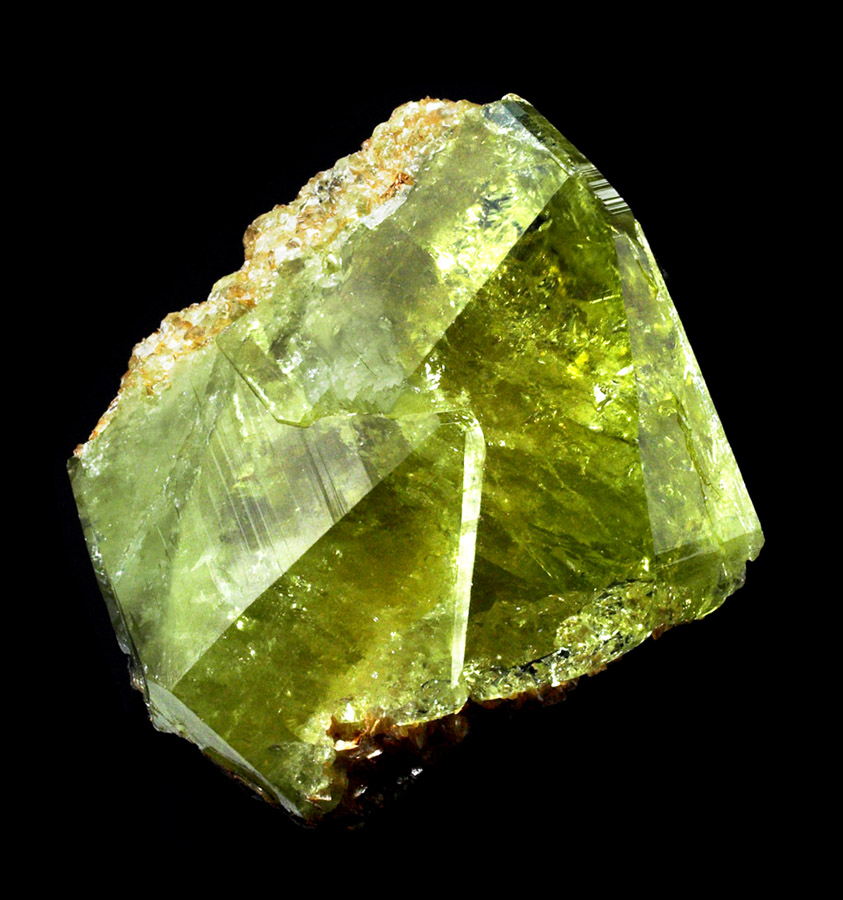| Crystal system | Monoclinic |
| Transparency | Transparent |
| Luster | Vitreous |
| Fracture | Conchoidal |
| Cleavage | Good pinacoidal |
| Specific Gravity | 2.94 |
| Hardness | 5.5 |
| Optical Character | Biaxial + ; Double Refractive |
| Refractive index | 1.602-1.621 |
| Birefringence | 0.019 to 0.021 |
| Dispersion | 0.014 |
| Fluorescence | None |
| Pleochroism | Very weak |
| Chemical Formula | Na2Al6P4O16(OH)8 |
| Comments | |
| Streak | White |
Brazilianite is one of the more recently discovered of the minerals that are of interest to gem collectors. The discovery was made during World War II in Conselheire, Pena district, Minas Gerais, Brazil, where it occurs in phosphate rich pegmatite dikes. Like beryllonite, it is a phosphate, bearing the formula Na2Al6P4O16(OH)8. It is transparent to translucent, yellowish green to greenish yellow, and forms in prismatic monoclinic crystals. In appearance, it bears some resemblance to similar colors of beryl or chrysoberyl; however, it is too soft (5 1/2) and much too fragile (because of perfect cleavage) to be of great importance as a gemstone.
The fracture of brazilianite is conchoidal, the streak is white, and the luster is vitreous. No inclusions have been encountered that the GIA's gemologists regard as diagnostic. It has an R.I. ranging from plus or minus .002 of 1.602 up to within plus or minus .003 of 1.621; the intermediate index is near 1.605. The birefringence varies from .019 to .021, and it is biaxial positive. The pleochroism is very weak and no phenomenon is shown. It is insoluble in hydrochloric acid and fuses with difficulty.
This gem may be faceted or cut in the cabochon style. Because of the excellent cleavage, it must be oriented carefully. Usually, rough material contains many fine flaws, causing pits to occur during the polishing operation. This condition may be eliminated by changing polishing directions. Linde A powder, together with crown angles of 42° and pavilion angles of 43°, prove satisfactory.
Brazilianite is distinguished easily from beryl and chrysoberyl by its R.I., and its birefringence separates it from topaz. Likewise, it may be separated from topaz by the fact that it has an S.G. of 2.94, plus or minus .03, in contrast to the 3.5 + of topaz.


